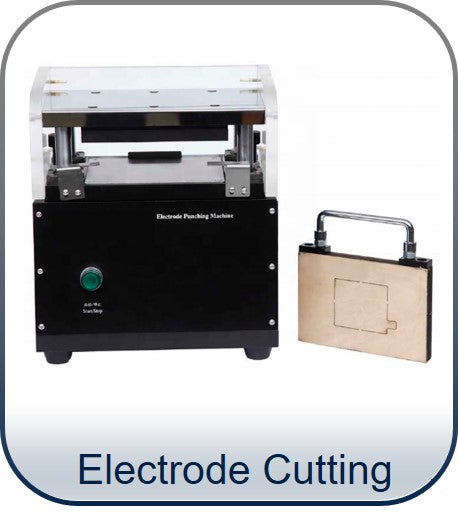Pouch Cell Lab Line Equipment For Battery R&D

































Lithium-ion batteries (LIBs) are commonly used in small electronics (smartphones, tablets, drones) and electric vehicles due to their outstanding energy storage capability. The most common three LIB forms are coin cell, pouch cell and cylinder cell. Pouch cells are widely used in electric vehicles because of their high energy density, great power performances, excellent recycling capability as well as fast production speed and easy maintenance.
MSE Supplies provides a full set of pouch cell lab line solutions. We can supply all the equipment and materials required in the production process. Please contact us for more details.
Pouch Cell Assembly Procedure
The pouch cell is a soft battery design enclosed in an aluminum-coated plastic film. The cell components are arranged in repeated stacks of layers consisting of solid sheets, two layers of active material, and a liquid electrolyte. Two conductive tabs stick out welding to positive and negative connectors in the pouch.
- Electrode Sheet Preparation
- Cathode: 96% Active material + 2% PVDF binder + 2% Carbon black
Solvent: NMP
The PVDF powder should be baked at 80℃ for 8 hours. - Anode: 96% Active material + 2% CMC/SBR binder + 2% Carbon black
Solvent: De-ionized water (Conductivity ≤1µs/cm) - Pouch Cell Assembly
- Battery Testing
The electrode of lithium-ion battery (LIB) is composed of active materials, conductive agent, battery binder and dispersant follow by the feeding sequence: active material, conductive agent and binder. feeding time, feeding ratio require strict process. The mixing process (rotation speed, vacuum, temperature, humidity, etc.) and final slurry properties (viscosity, particle size, solid content, etc.) should strictly follow the procedure according to the materials. Furthermore, the slurry needs to be filtered to remove large particles, precipitation, ferromagnetism and other substances. Here are recommended electrode formulations:
The homogeneous paste is coated on a sheet of conductive metal foils (current collectors) using coating machine. Afterwards, the dried electrode sheets are placed into a rolling press to be compressed at high pressure to obtain certain porosity and thickness. The final sheets can be cut into desired shape and size, with conductive tips at the top as tabs.
The separator is placed between the electrodes inserted in the pouch as a stack using a stacking machine. The topside of the pouch is joined together using heat sealing machine. An electrolyte injection system is then used to add the liquid electrolyte into the cell and another side will also be sealed. The whole assembled process should be operated in a controlled environment to protect battery damage from air and water.
Test the performance of assembled battery cells using battery analyzers provided by MSE Supplies.
Refenrences
- "Recycle, recover and repurpose strategy of Spent Li‐ion Batteries and catalysts: current status and future opportunities." ChemSusChem 13.12 (2020): 3079-3100.
- "Toward Practical High‐Energy‐Density Lithium–Sulfur Pouch Cells: A Review." Advanced Materials 34.35 (2022): 2201555.
